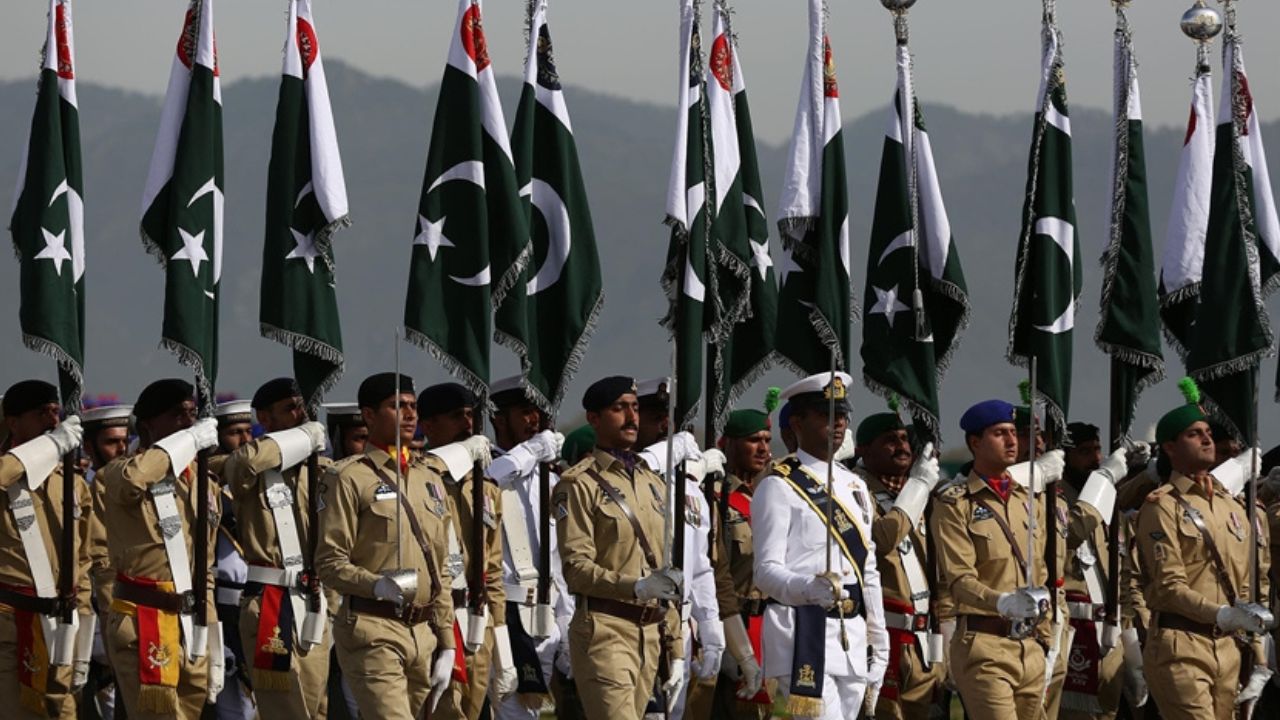Pakistan has been avoiding escalation in its current conflict with India following the 22 April Pahalgam attack in Indian Illegally Occupied Jammu and Kashmir (IIOJK), which resulted in the deaths of 26 Hindu pilgrims. Since then, India has accused Pakistan of terrorist activity without carrying out an investigation or providing any solid evidence to support its claim.
On 5 May, India initiated Operation Sindoor, a series of missile strikes targeting alleged militant camps in Pakistan and Pakistan-administered Jammu and Kashmir — including Kotli, Bahawalpur, Muridke, Bagh, and Muzaffarabad. Following additional attacks in the early hours of 10 May, Pakistan retaliated by launching Operation Bunyan al-Marsous, targeting Indian military facilities.
The operation’s name, derived from a Quranic phrase meaning “a solidly cemented structure,” conveyed Pakistan’s message of resilience and unity — not an escalation of conflict.
However, this is not the first time the two nuclear-capable neighbours have stood on the brink of all-out war.
Operation Gulmarg (1947): The Initial Offensive
Pakistan’s first military operation, Operation Gulmarg, named after the picturesque valley town in Kashmir, symbolised the belief that the liberation of Kashmir was both natural and destined.
In October 1947, amid reports of Muslim massacres by Dogra forces and the Maharaja's impending accession to India, Pakistani tribal militias, supported by army officers, invaded Kashmir. Their objective was to liberate the region before India could formally annexe it. As they advanced towards Srinagar, the Maharaja signed the accession document, prompting Indian troops to enter Kashmir, marking the beginning of the First Kashmir War and a conflict that persists to this day.
Operations Gibraltar and Grand Slam (1965): The Gamble in Kashmir
In August 1965, Pakistan launched Operation Gibraltar, named after the Islamic conquest of Spain, aiming to inspire rebellion in Indian-controlled Kashmir. Thousands of Pakistani soldiers, disguised as locals, infiltrated the region to incite an uprising. The mission failed, triggering a military response from India.
To divert India’s attention, Pakistan followed up with Operation Grand Slam on September 1, targeting Akhnoor, a crucial Indian supply route. Though early advances showed promise, sudden changes in command stalled progress, leading to a full-scale war that ended in a military stalemate.
Operation Chengiz Khan (1971): A Pre-emptive Strike That Misfired
When tensions rose amid India’s support for separatists in East Pakistan, Pakistan launched Operation Chengiz Khan on December 3, 1971. It was named after the fearsome Mongol conqueror, while the operation aimed to disable Indian air power through surprise attacks on 11 Indian airbases. The damage, however, was minimal. India’s swift and decisive response led to a multi-front war, culminating in the fall of Dhaka and the creation of Bangladesh, Pakistan’s most devastating military and emotional loss.
Operation Badr (1999): The Mountain Gamble
In spring 1999, Pakistan initiated Operation Badr, named after the Prophet Muhammad (PBUH)’s first military victory. The plan involved Pakistani soldiers and Kashmiri fighters covertly occupying strategic peaks in the Kargil region, left vacant during winter by Indian forces. India discovered the intrusion in May, resulting in intense combat at high altitudes. Although tactically significant, the operation failed due to international pressure, especially from the United States, and led to Pakistan’s withdrawal. The conflict claimed hundreds of lives and damaged Pakistan’s diplomatic reputation.
Operation Bunyan-un-Marsoos (2025): A Wall of Unity
In 2025, as India carried out a new act of aggression under Operation Sindoor, Pakistan, after days of efforts to de-escalate, responded with Operation Bunyan al-Marsous on May 10.
Named after a Quranic phrase from Surah As-Saff, meaning “a solidly cemented structure,” the operation symbolised national unity, steadfast defence, and spiritual strength. Pakistan’s strikes were precise and restrained, aimed at Indian military installations. It was not an escalation, but a firm signal that Pakistan would defend itself while resisting being dragged into India’s internal political drama.
Once again, Indian media fulfilled its expected role. Instead of awaiting evidence, it marketed outrage as reality. News channels aired nationalistic montages, reporters shouted war cries, and anchors demanded retaliation, all before facts had emerged. This pattern, familiar to Pakistan, has played out repeatedly: where calls for peace are drowned out by sensationalist primetime theatrics. As a result, Pakistan, despite consistently advocating peace, finds itself forced to respond militarily, not out of choice, but necessity.
